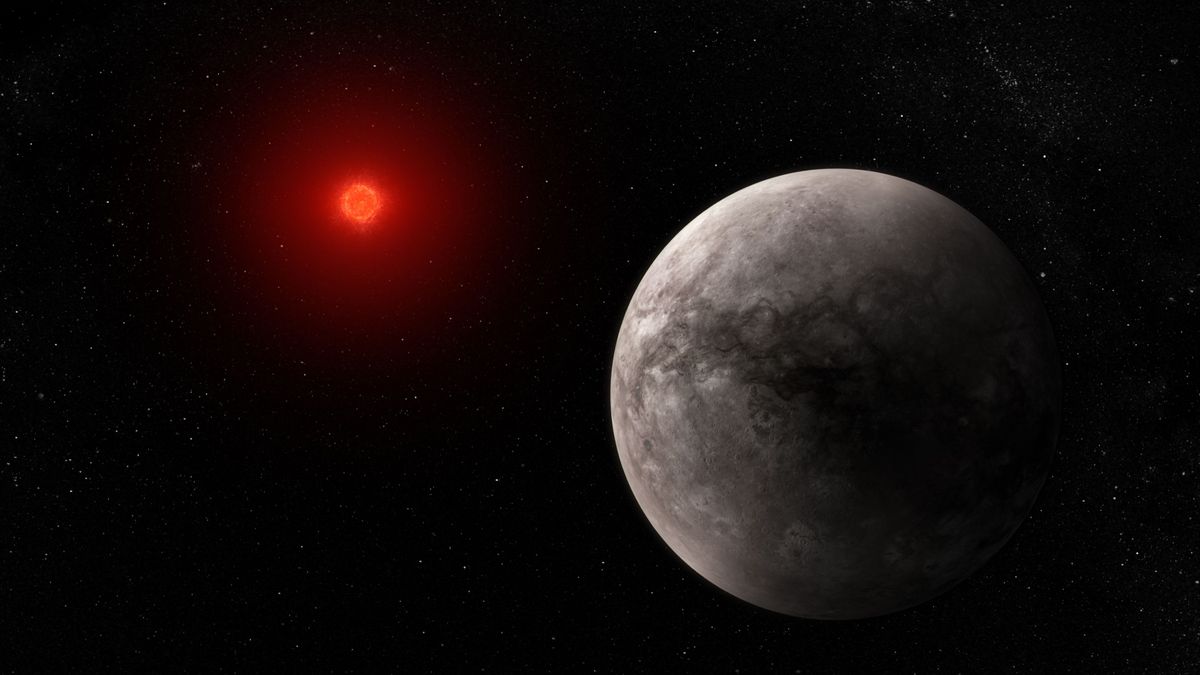Welcome to DU!
The truly grassroots left-of-center political community where regular people, not algorithms, drive the discussions and set the standards.
Join the community:
Create a free account
Support DU (and get rid of ads!):
Become a Star Member
Latest Breaking News
Editorials & Other Articles
General Discussion
The DU Lounge
All Forums
Issue Forums
Culture Forums
Alliance Forums
Region Forums
Support Forums
Help & Search
Science
Related: About this forumJames Webb telescope detects light from a small, Earth-like planet -- and finds it's missing its atmo
James Webb telescope detects light from a small, Earth-like planet — and finds it's missing its atmosphereBy Briley Lewis published 44 minutes ago
NASA's James Webb Space Telescope measured the temperature of the Earth-like planet TRAPPIST-1b and found that it is too hot for humans and likely has no atmosphere.

An illustration of the rocky, Earth-like planet TRAPPIST 1-b, with its small red sun blazing in the distance. (Image credit: NASA, ESA, CSA, J. Olmsted (STScI))
Five years ago, NASA's infrared Spitzer Space Telescope helped discover a family of seven rocky exoplanets orbiting the same star, known as TRAPPIST-1. Now, NASA's new infrared powerhouse — the James Webb Space Telescope (JWST) — measured the temperature of one of those worlds, TRAPPIST-1b, in new research published in the journal Nature.
The bad news: The Earth-like planet is almost certainly uninhabitable.
Astronomers used JWST's mid-infrared camera, called MIRI, to look for the planet's thermal emission — think heat-sensing "Terminator" vision. They found that TRAPPIST-1b is scorching — about 450 degrees Fahrenheit (232 degrees Celsius), about the temperature of an oven — and that it likely lacks an atmosphere.
The discovery is another record-breaking first for the JWST, which has been steadily producing newsworthy results since its launch.
"This is the first detection of any form of light emitted by an exoplanet as small and as cool as the rocky planets in our own solar system," NASA officials said in a statement.
More:
https://www.livescience.com/james-webb-telescope-detects-light-from-a-small-earth-like-planet-and-finds-its-missing-its-atmosphere
2 replies
 = new reply since forum marked as read
Highlight:
NoneDon't highlight anything
5 newestHighlight 5 most recent replies
= new reply since forum marked as read
Highlight:
NoneDon't highlight anything
5 newestHighlight 5 most recent replies
James Webb telescope detects light from a small, Earth-like planet -- and finds it's missing its atmo (Original Post)
Judi Lynn
Mar 2023
OP
astroimagery
(2 posts)1. oh well...
There was hope for this system where I believe three planets were thought to be possible for extraterrestrial life.
As the search for life continues there are bound to be ups and downs. I just wonder about our ideas of what exactly is habitable or not bearing in mind that aliens could be very different to us.
The search continues...
gopiscrap
(24,433 posts)2. welcome to DU